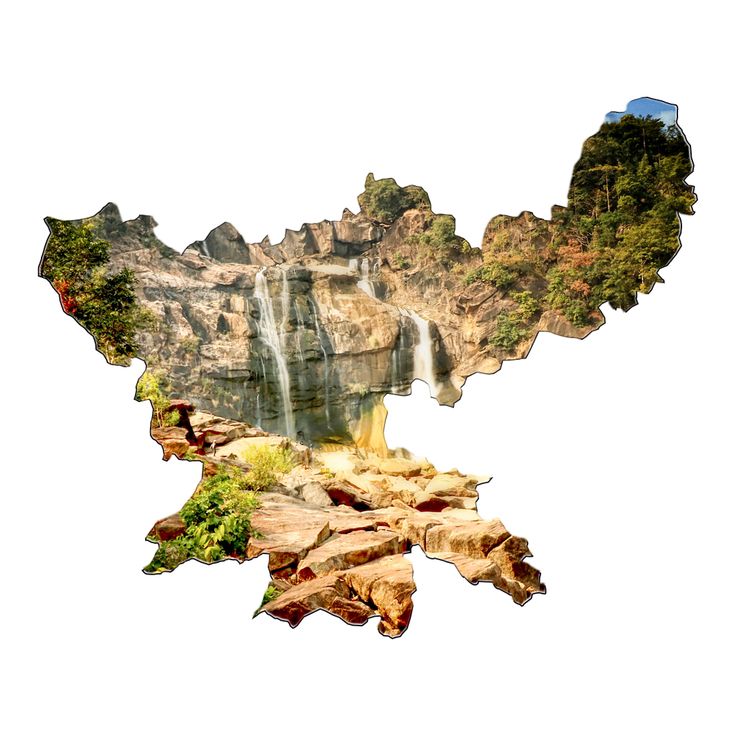Jharkhand: 10 Powerful Facts About Its Rich History, Culture, and Impact on Society
Located in the heart of India, Jharkhand is a state known for its lush green forests, vibrant culture, and rich history. While it may not always make headlines like other major states, Jharkhand holds a crucial place in the country’s political and cultural landscape. From its deep connection to the tribal communities to its natural resources, Jharkhand plays an important role in shaping India’s future. In this article, we will explore the history, culture, and societal significance of Jharkhand, along with its impact on daily life and beyond.
History
It was carved out as a separate state on November 15, 2000, from Bihar, marking a significant chapter in Indian history. The creation of Jharkhand was primarily driven by the desire of the region’s tribal communities to have a distinct state that could better address their socio-economic needs and preserve their unique culture. The state’s capital, Ranchi, became the center of governance and cultural activities.
Before its formation, Jharkhand was part of the larger region of Bihar, and its tribal populations had long struggled with political and economic marginalization. The demand for a separate state was largely fueled by the region’s rich mineral resources and the challenges of equitable resource distribution.
Historically, the region has been home to Munda, Santhal, Oraon, and other indigenous communities who have lived in the forests and hills of this area for centuries. Jharkhand also boasts a rich cultural history, with the influence of ancient tribes, kingdoms, and rulers contributing to its diverse heritage. The state witnessed numerous freedom struggles, notably the Munda Rebellion and Santhal Rebellion, which were led by local tribal leaders against colonial forces.
Daily Life
Life in Jharkhand is marked by a vibrant mix of tribal traditions, modern development, and rural simplicity. The majority of the population in Jharkhand lives in rural areas, with farming being the primary occupation. Rice, maize, pulses, and vegetables are the staple crops grown by the farmers. The state’s fertile land, coupled with abundant rainfall, makes agriculture the backbone of its economy.
However, urbanization is steadily increasing, with cities like Ranchi, Jamshedpur, and Dhanbad becoming centers for education, trade, and commerce. Jamshedpur, home to Tata Steel, is one of the major industrial hubs in India. It’s a city where the intersection of industrial growth and tribal heritage is evident.
The people of Jharkhand have a deep connection to nature, and their daily routines are closely tied to the forest and landscapes around them. For example, many rural residents engage in forestry-related work, including wood cutting, hunting, and gathering forest produce like medicinal plants and fruits. Tribes such as the Munda and Santhal celebrate several festivals and cultural observances that are integral to their lives.
Impact on Society
Jharkhand’s role in society is multifaceted, combining tribal welfare, industrial growth, and natural resources. The state is rich in minerals like coal, iron ore, and bauxite, which contribute significantly to India’s economy. Mining, steel production, and energy generation have transformed Jharkhand’s industrial landscape, providing employment and economic opportunities. However, these industries also pose challenges, including the displacement of tribal populations and environmental concerns.
In terms of social impact, Jharkhand is home to one of India’s most diverse tribal populations, which influences its culture, religion, and festivals. The tribal communities have long fought for their rights to land, water, and forest resources. Tribal rights movements in the state have shaped both the political discourse and the development of the region. The Jharkhandi identity has been a key part of the state’s political narrative, focusing on preserving indigenous cultures and advocating for the rights of tribal people.
Key Facts
- Formation of the State: It became the 28th state of India on November 15, 2000.
- Natural Resources: The state is rich in mineral resources, including coal, iron ore, bauxite, and copper.
- Tribal Population: It is home to over 26% tribal population, making it one of the most tribal states in India.
- Key Industries: It is an industrial hub with major companies like Tata Steel and Jindal Steel.
- Famous Festivals: Sarhul, Makar Sankranti, and Karam are major festivals celebrated by the indigenous people.
- Climate: The state experiences a tropical climate with hot summers and mild winters.
- Tourist Destinations: Ranchi, Netarhat, and Betla National Park are popular tourist destinations in Jharkhand.
- Famous Food: Thekua, Litti Chokha, and Rugra are traditional dishes in Jharkhand.
Significance
It’s significance can be understood from its role in India’s industrialization, tribal rights movements, and its rich cultural heritage. The state is crucial for the country’s mineral resources, contributing significantly to industries such as steel, coal, and power generation. Jharkhand’s minerals are the backbone of several industries that fuel the Indian economy.
The state’s cultural significance lies in its preservation of indigenous customs, rituals, and languages. Jharkhand has some of the most vibrant tribal cultures, with folk music, dance, and arts reflecting the region’s deep connection to nature and its historical heritage. These cultural traditions also play a crucial role in the state’s identity.
It’s tribal welfare remains a key focus, with policies aimed at ensuring the rights of indigenous communities are protected, including their access to land and natural resources. These efforts to empower the tribal population are not just vital for social equity but also for cultural preservation.
Observances and Wishing the People
It is known for its lively festivals and cultural observances, which are deeply rooted in the tribal traditions of the region. The Sarhul Festival, celebrated in March-April, marks the beginning of the farming season and is dedicated to the worship of nature gods. Karam and Makar Sankranti are other important festivals, where people engage in community rituals, prayers, and dances.
Wishing the people of Jharkhand on these festivals is a way to celebrate their rich cultural heritage, resilience, and unity. These occasions serve as a reminder of the enduring connection between the people of Jharkhand and their ancestral lands.
FAQs
- What is known for? It is known for its rich mineral resources, industrial growth, and vibrant tribal culture.
- When was Jharkhand formed as a state? It was formed as a separate state on November 15, 2000.
- Which industries are important in Jharkhand? Major industries in Jharkhand include mining, steel production, and energy generation.
- What are some key festivals in Jharkhand? Key festivals include Sarhul, Karam, and Makar Sankranti, which are celebrated by the indigenous tribes.
- What is the main occupation of people in Jharkhand? The main occupation of people in Jharkhand is agriculture, although mining and industrial work are also significant.
Conclusion
It is a state of contrasts, where the raw power of its mineral resources meets the enduring strength of its tribal cultures. From its historical struggles for autonomy to its role in shaping India’s industrial growth, Jharkhand is a state that plays an important part in the broader national context. Whether through its contributions to India’s economy, its rich cultural heritage, or its ongoing efforts to protect the rights of its tribal communities, Jharkhand stands as a testament to the resilience and spirit of its people. Its future, though fraught with challenges, holds immense potential for growth, development, and cultural preservation.










